

"Frühzeitig anfangen mag eine Herausforderung sein, aber zu spät zu sein wäre fatal "
— Matthieu van der Elst, Chief Impact Officer, Cathay Capital
Nachhaltigkeit
Investmentansatz – Risiko, Rendite und Nachhaltigkeit
Standardisierte Prozesse und Tools zur Messung, Verfolgung und kontinuierlichen Verbesserung der wirtschaftlichen, ökologischen und sozialen Auswirkungen der Portfoliounternehmen
Wir beziehen Nachhaltigkeit in alle Phasen des Investitionszyklus ein
Investition
Ausschlussliste
Nachhaltigkeits-Screening
Durchgeführt vom Investment-Team
Sustainability Due Diligence
Für relevante Unternehmen zum Zeitpunkt der Investition oder innerhalb von 6 Monaten nach Transaktion
Nachhaltigkeitsklausel in der Aktionärsvereinbarung
Je nach Kontext
Haltedauer
Jährliche Bewertung mittels ESG-Risikoanalyse, Klima-Screening und Impact Scoring
Jährliche Überprüfung für Unternehmen mit hohem ESG-Risiko
Nachhaltigkeits-Reporting: jährliche Überprüfung der ESG-KPIs
Jährliche Portfolio-Beurteilung der Nachhaltigkeit (aggregiert) und KPI-Bewertung
Ressourcen-Hub für Best Practice
Veräußerung
Hervorheben der Nachhaltigkeitsleistung
Leistungsbilanz zur Hervorhebung der Nachhaltigkeitsleistung bei Veräußerung oder in künftigen Finanzierungsrunden
Ökosystemansatz - Unterstützung von Unternehmen auf ihrem Weg zur Nachhaltigkeit
Technologiegestützte Bewertungs-Tools für ESG, Klima- und Umweltauswirkungen für eine maßgeschneiderte Unterstützung von Unternehmen bei der Einführung verantwortungsvoller, nachhaltiger Geschäftspraktiken
Impact Resource Hub
Der Cathay ESG & Impact Resource Hub ist eine Online-Plattform, die Informationsinhalte und Best Practices zu einem breiten Spektrum von ESG-Themen wie Klimaschutz, HR-Management, Diversität & Inklusion, Data Governance & Ethik usw. bereitstellt. Der Resource Hub ist eine praktische Toolbox, die Portfoliounternehmen bei der einfachen und schnellen Umsetzung neuer ESG-Richtlinien und -Initiativen unterstützt.


Nachhaltigkeitsberichte
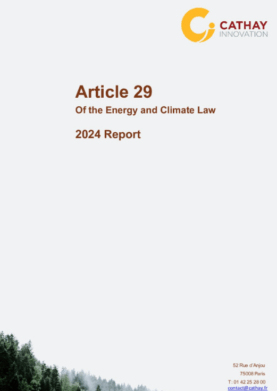
Article 29 of the Energy and Climate Law
2024 Report (Cathay Innovation)
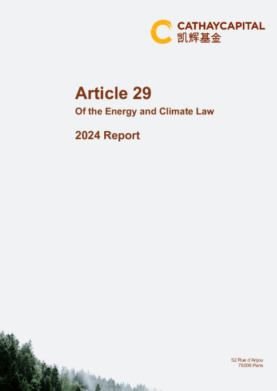
Article 29 of the Energy and Climate Law
2024 Report (Cathay Capital)
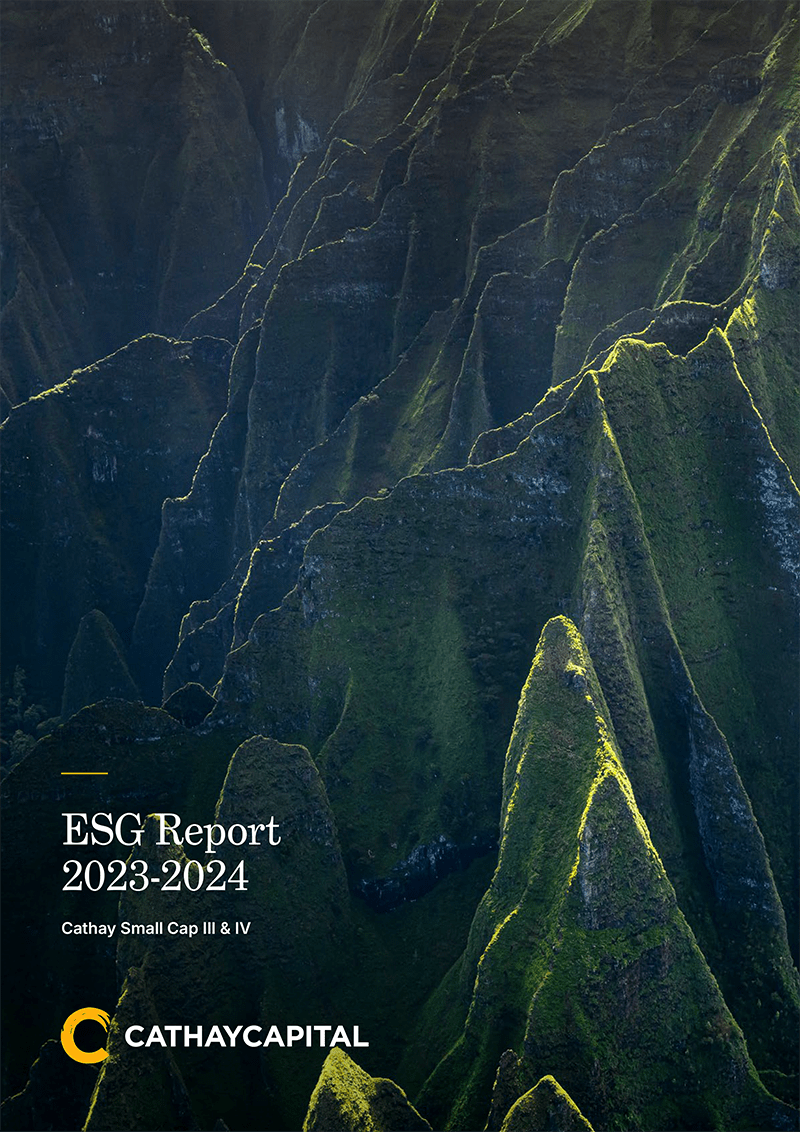
Cathay Capital Private Equity Small Cap III & IV
ESG Report 2023 - 2024
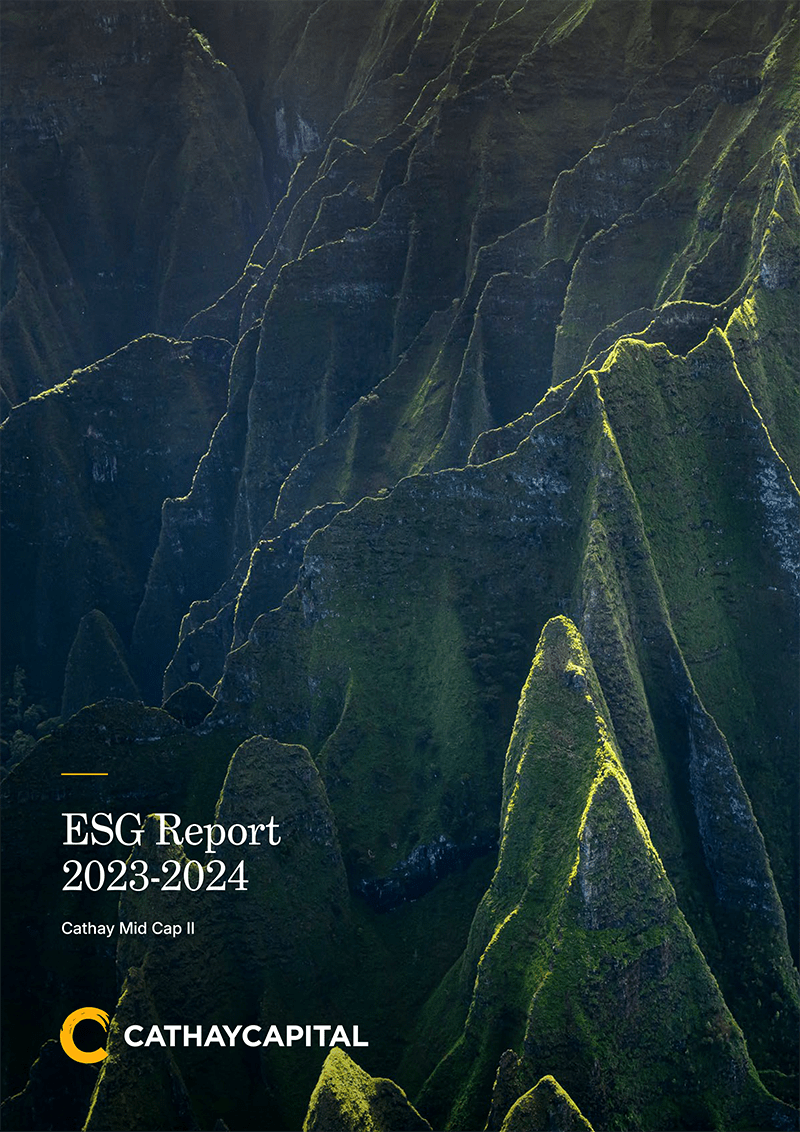
Cathay Capital Private Equity Mid Cap II
ESG Report 2023 - 2024
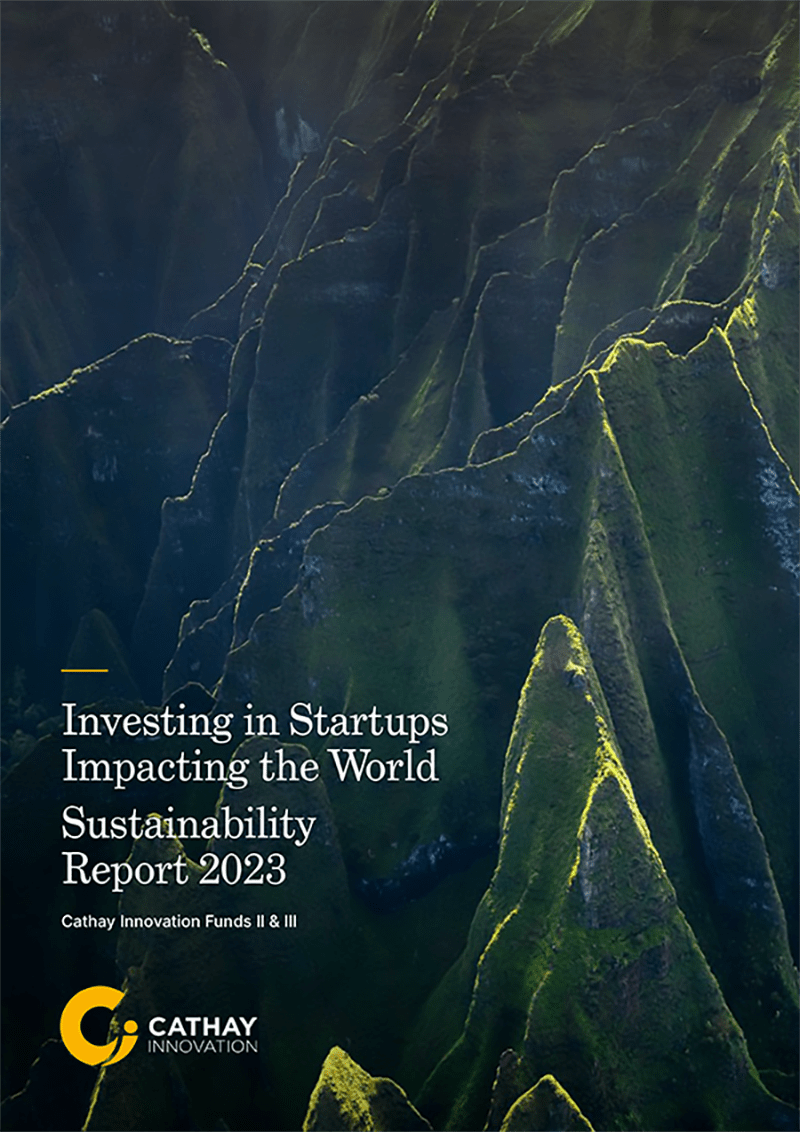
Cathay Innovation Fund II & III
Sustainability Report 2023 - 2024
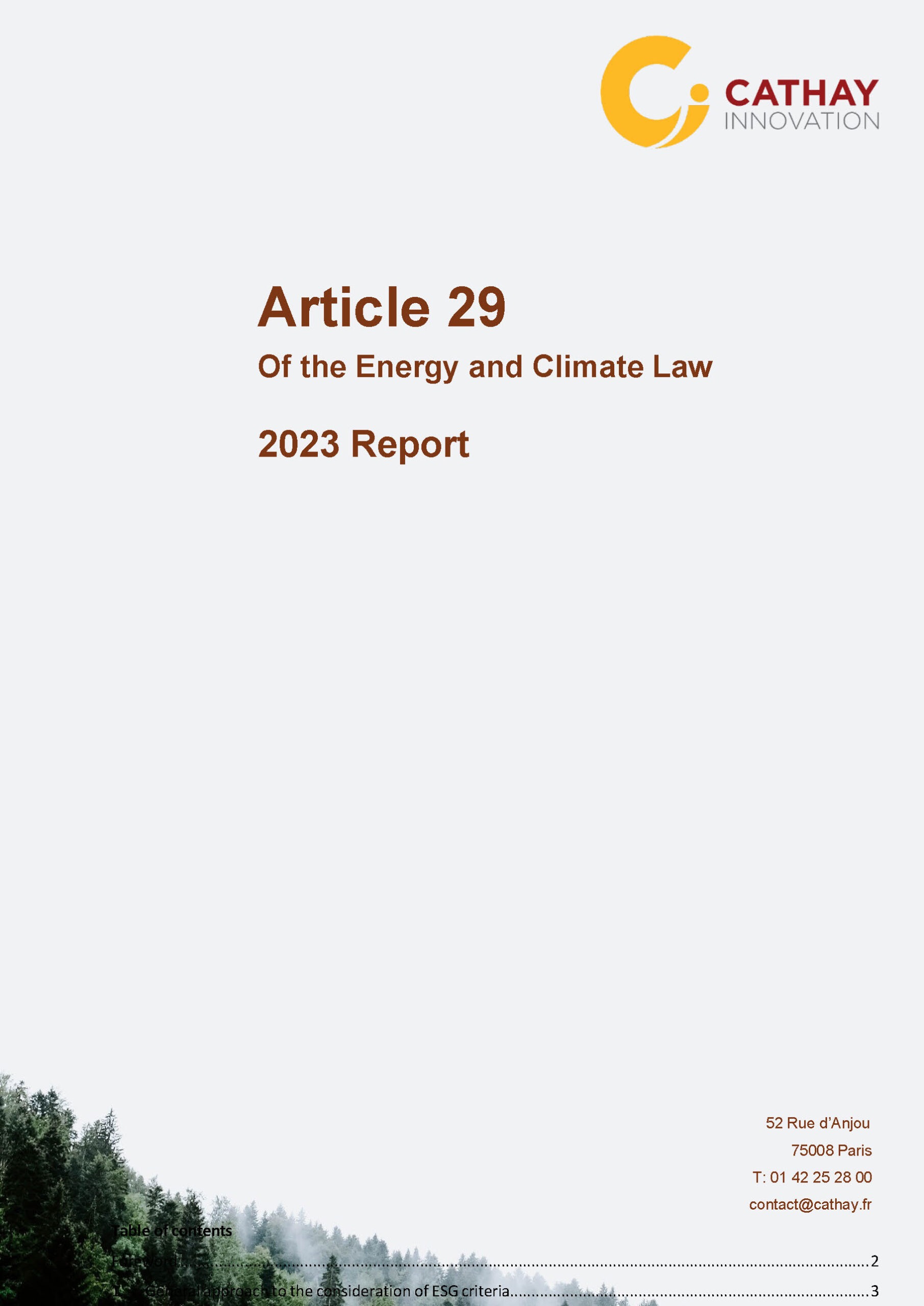
Article 29 of the Energy and Climate Law
2022 Report (Cathay Innovation)
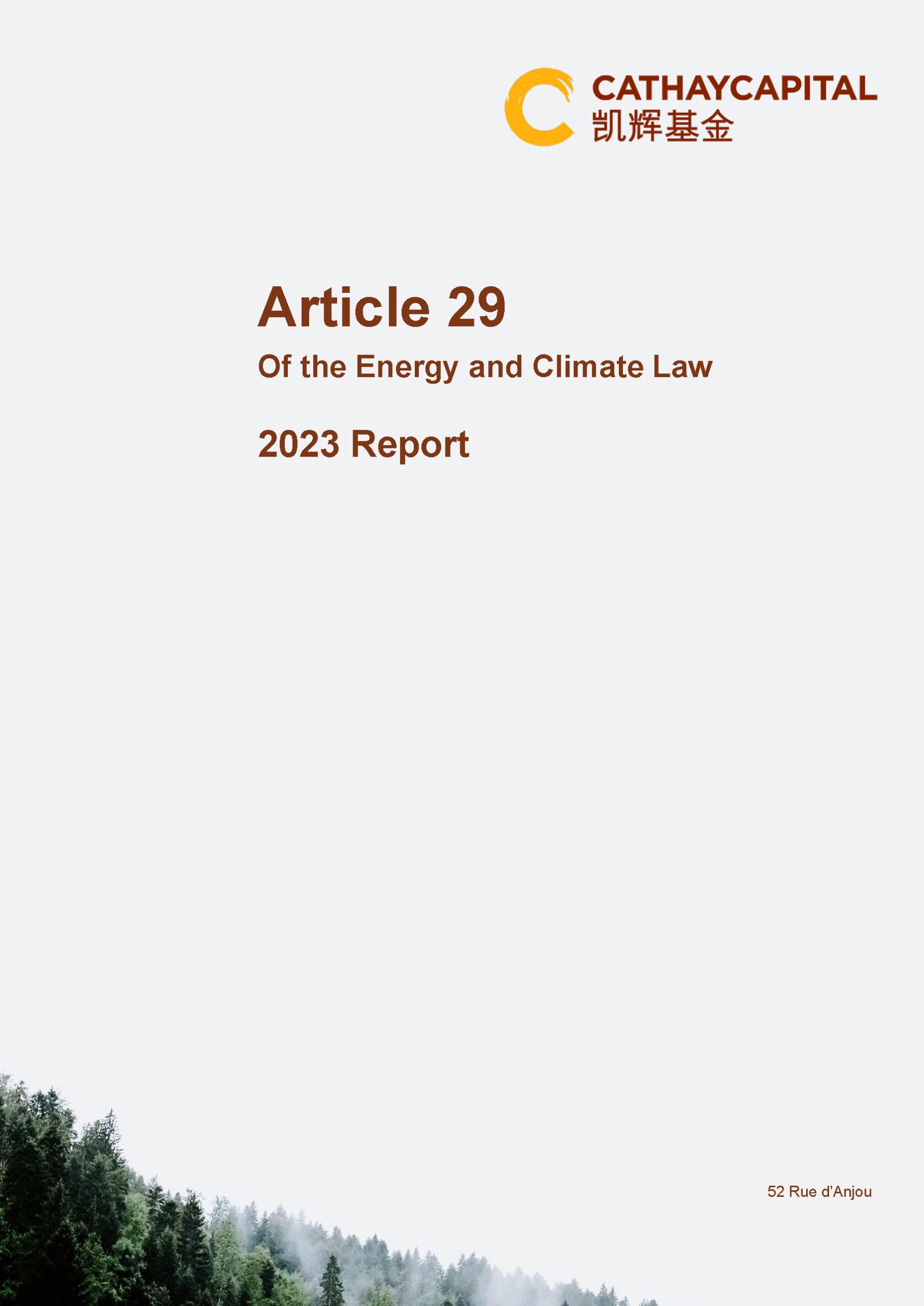
Article 29 of the Energy and Climate Law
2022 Report (Cathay Capital)
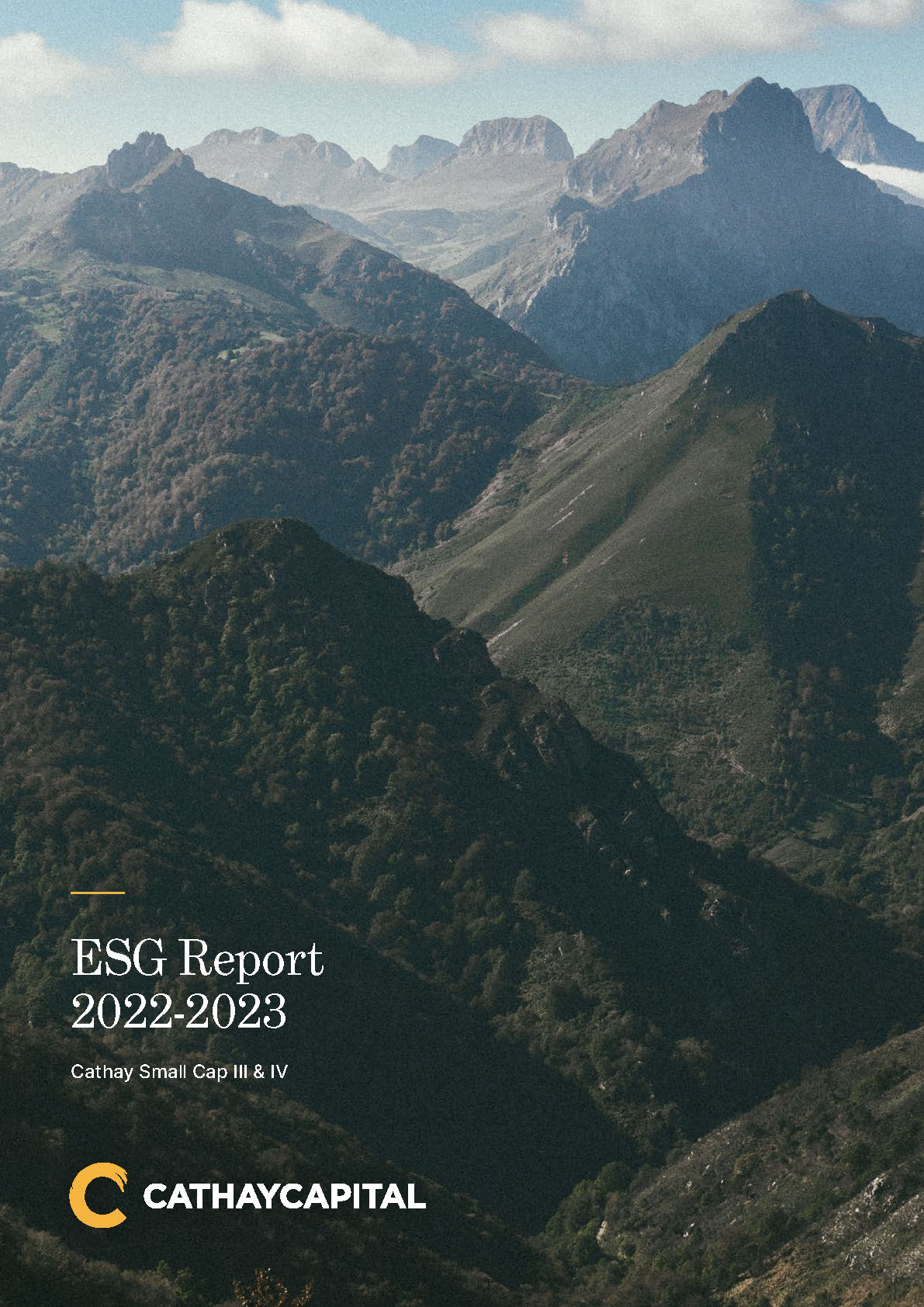
Cathay Capital Private Equity Small Cap III & IV
ESG Report 2022 - 2023
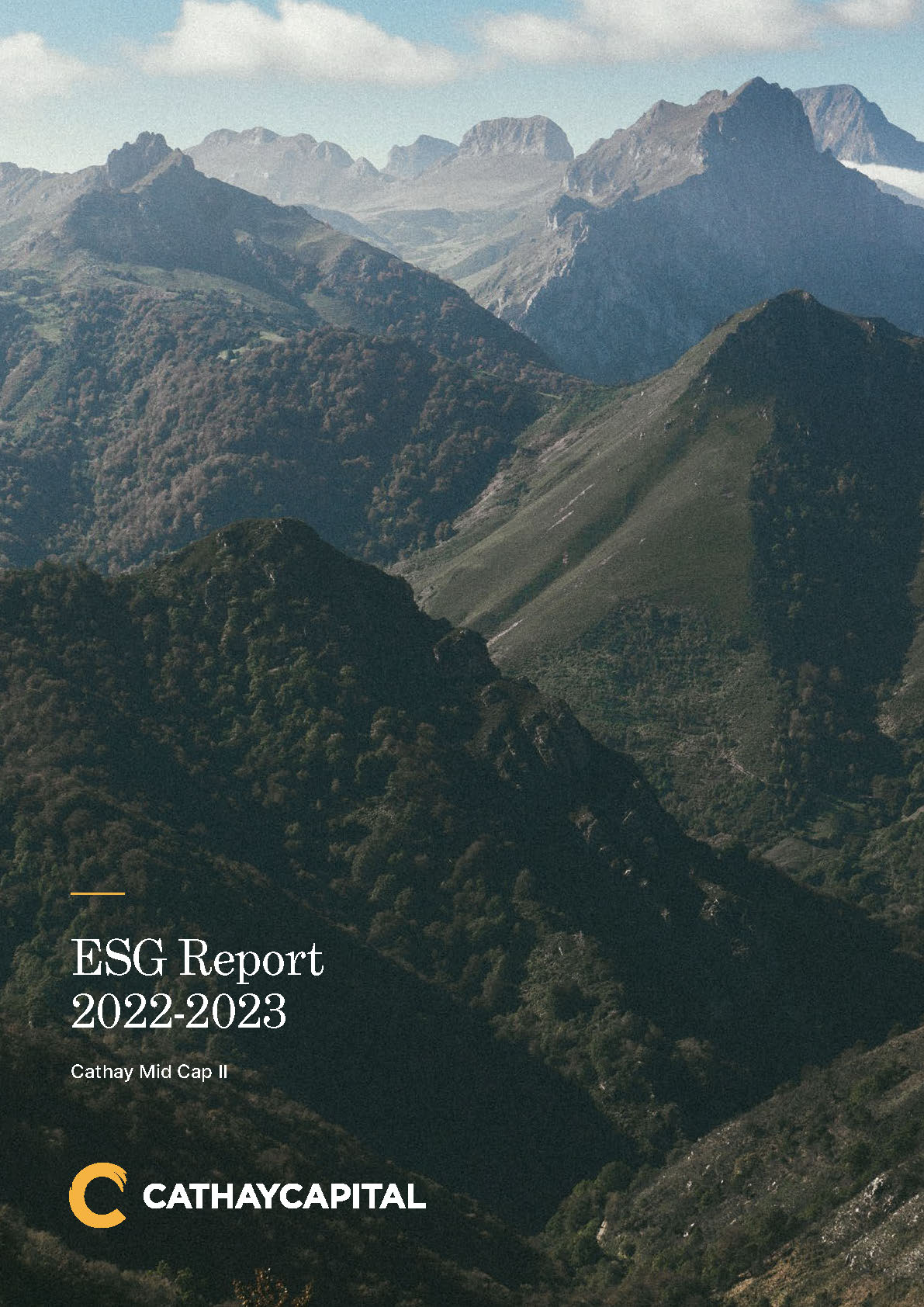
Cathay Capital Private Equity Mid Cap II
ESG Report 2022 - 2023
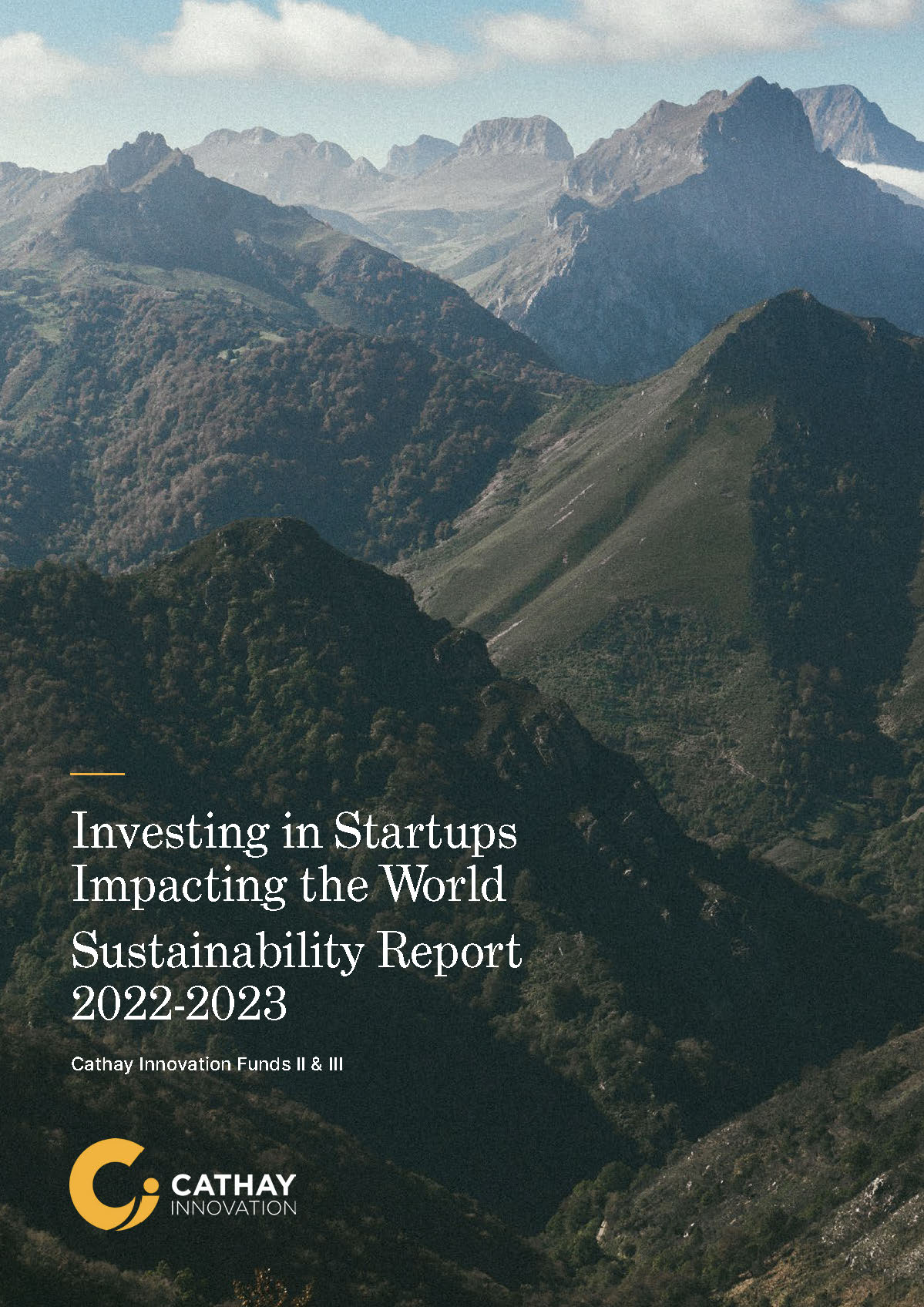
Cathay Innovation Fund II
Sustainability Report 2022 - 2023
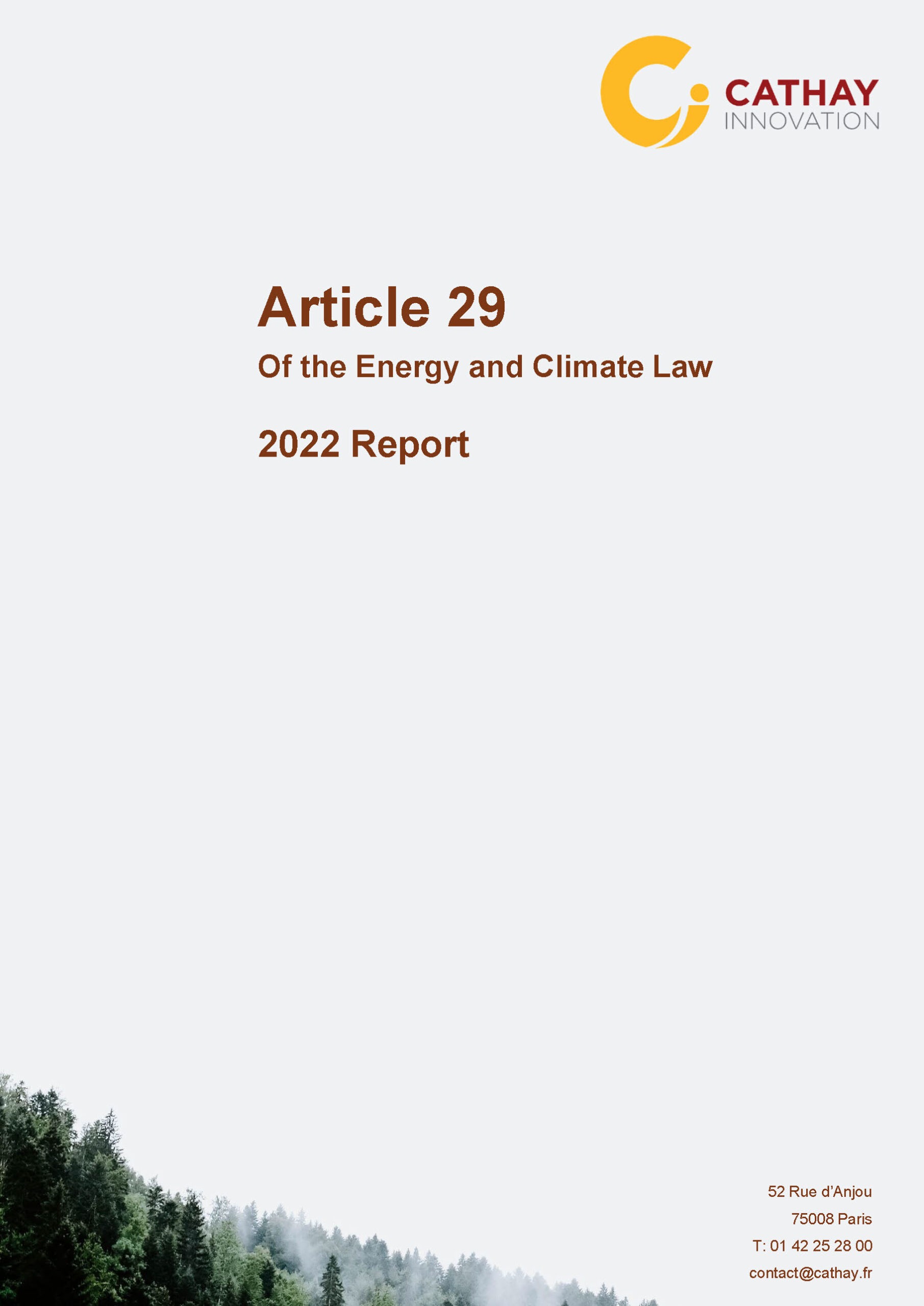
Article 29 of the Energy and Climate Law
2022 Report (Cathay Innovation)
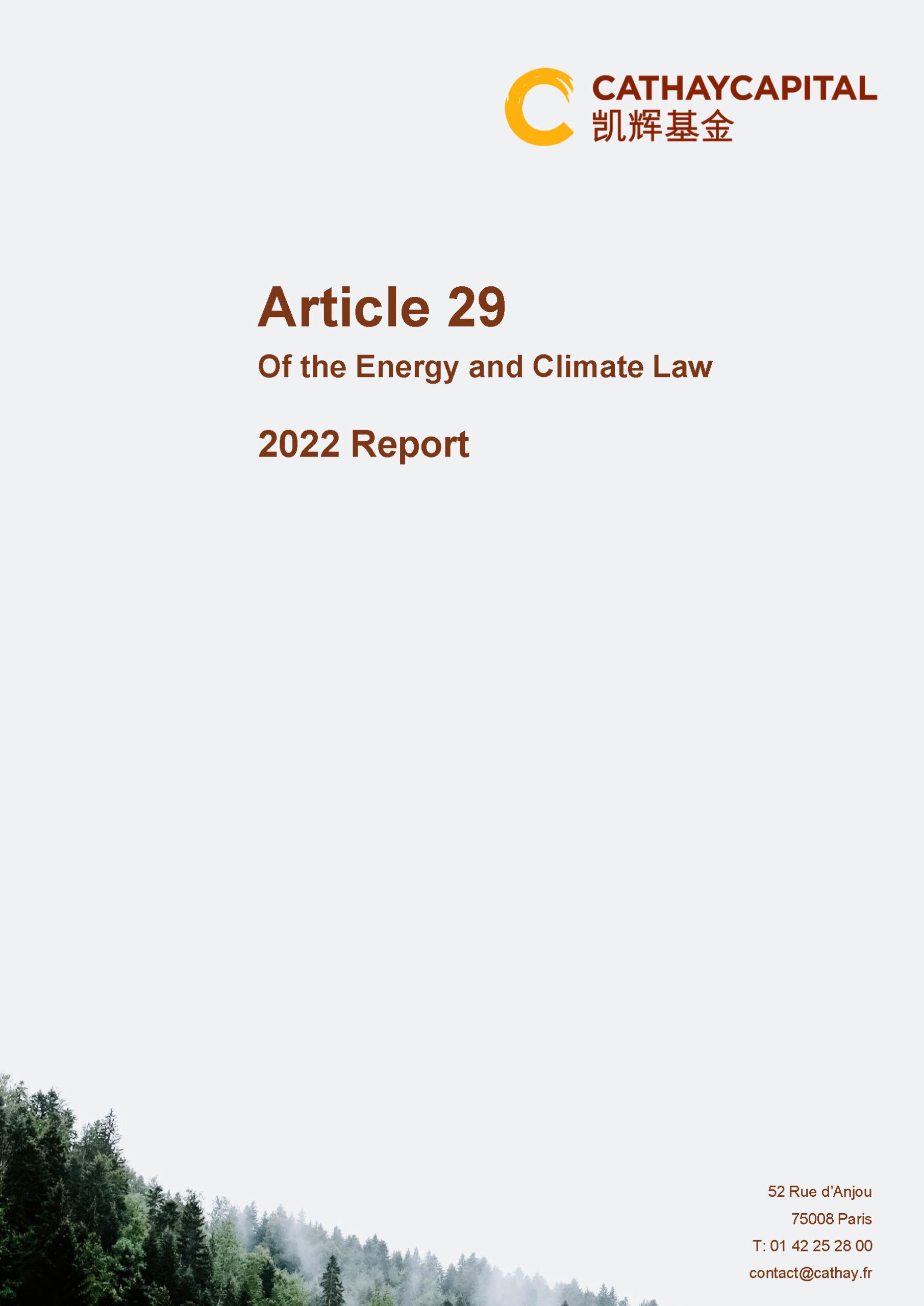
Article 29 of the Energy and Climate Law
2022 Report (Cathay Capital)
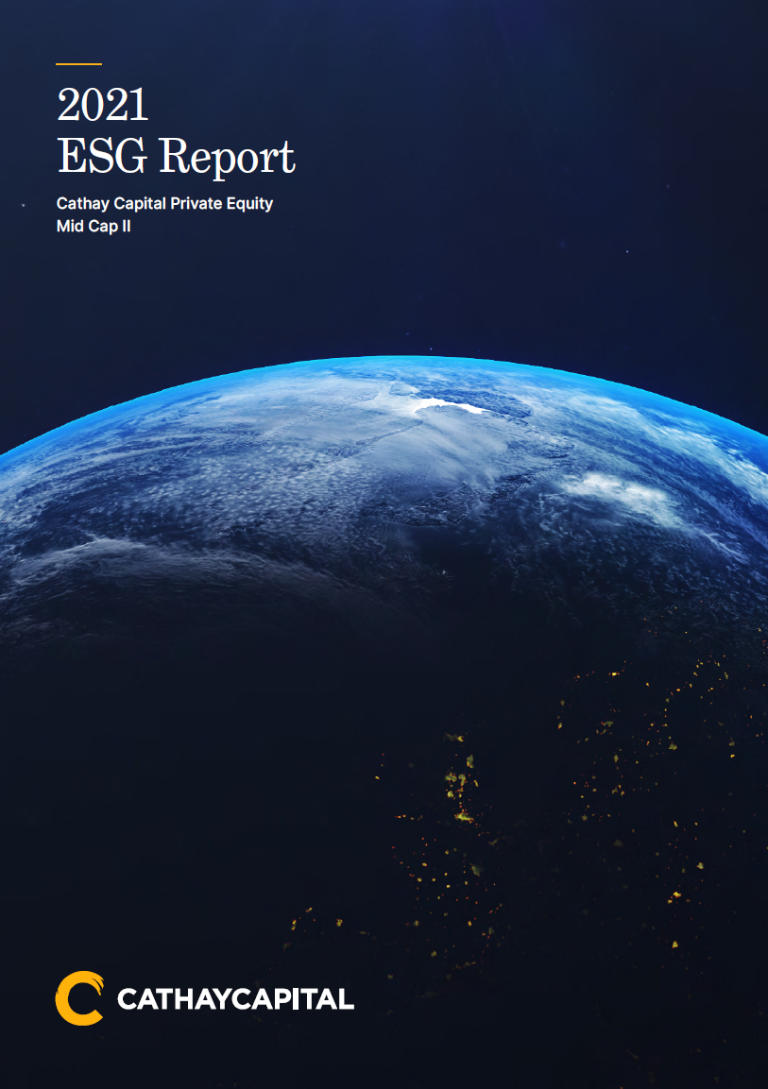
Cathay Capital Private Equity Midcap II
ESG Report 2021
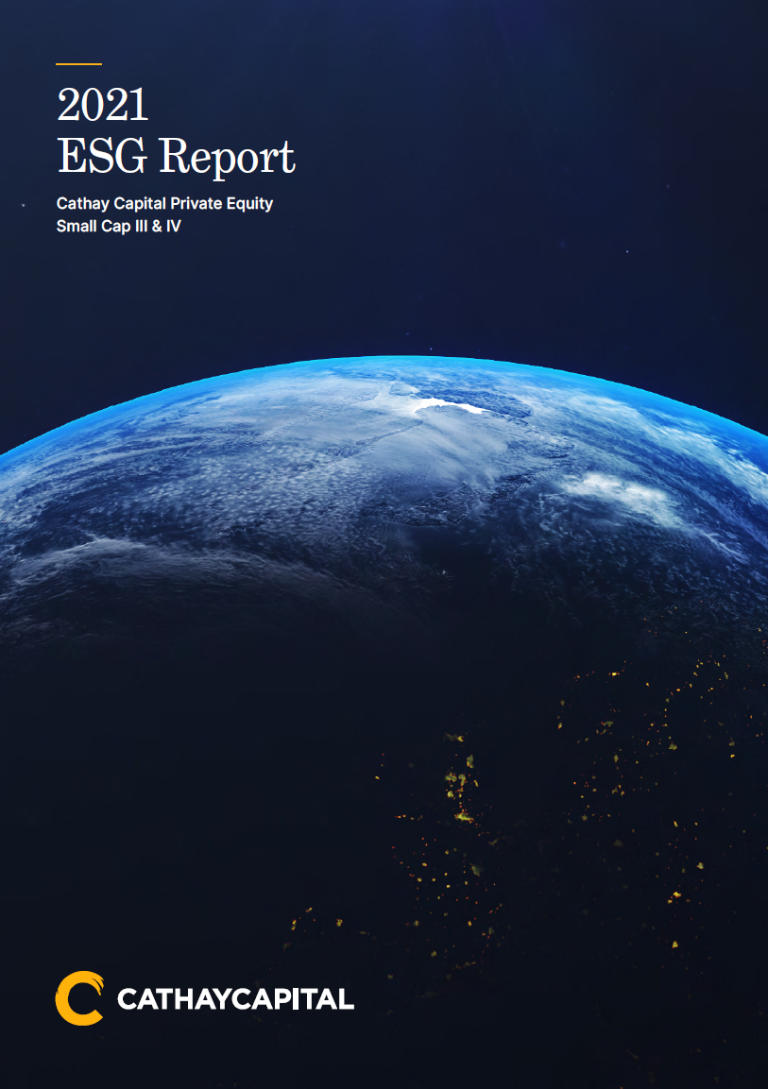
Cathay Capital Private Equity Smallcap III & IV
ESG Report 2021
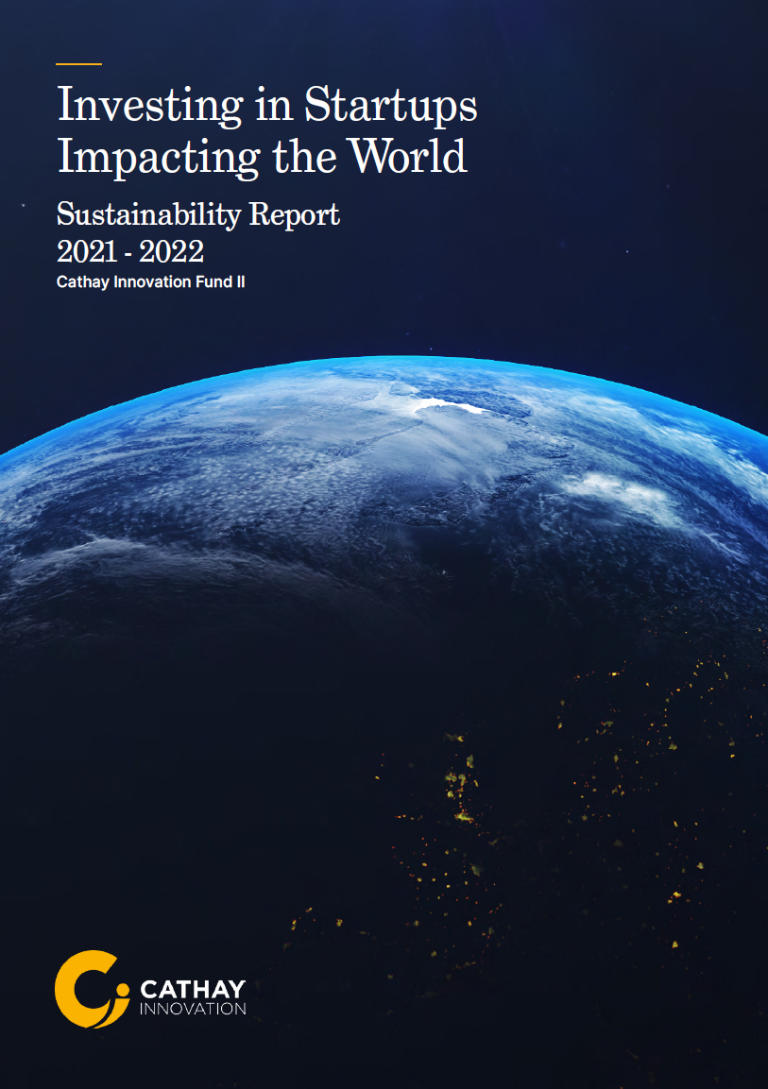
Cathay Innovation Fund II
Sustainability Report 2021 - 2022
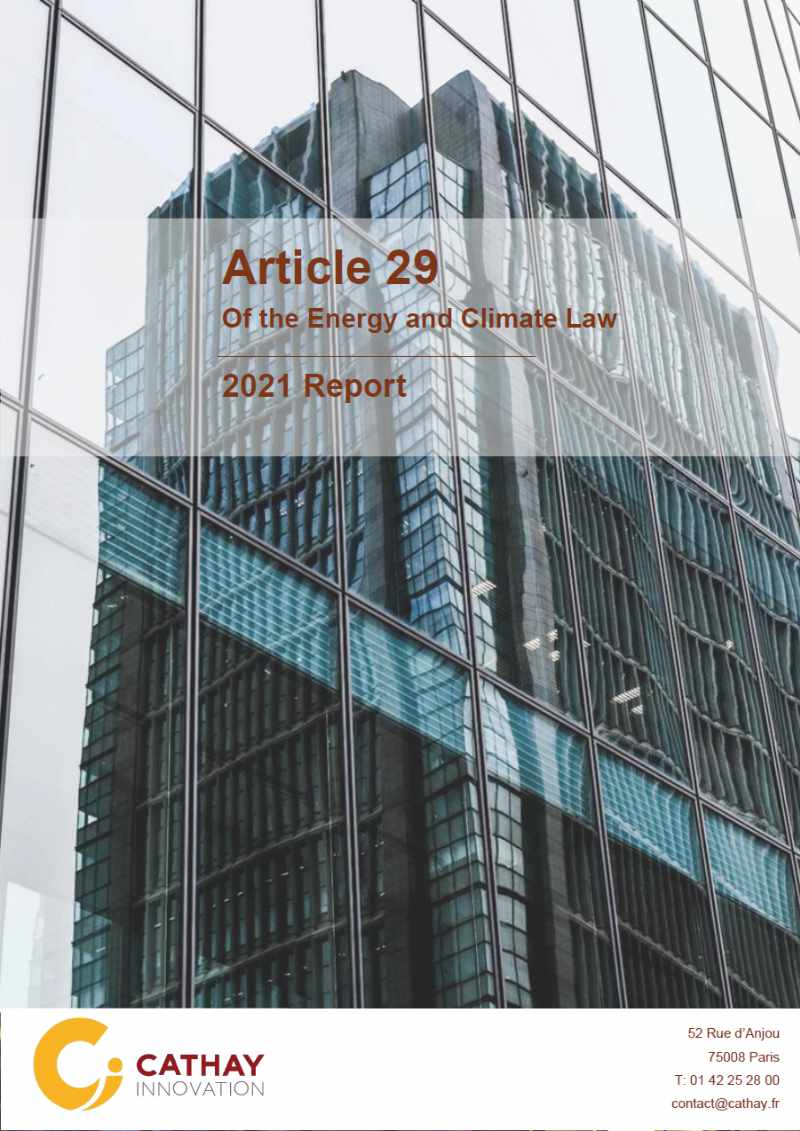
Article 29 of the Energy and Climate Law
2021 Report (Cathay Innovation)
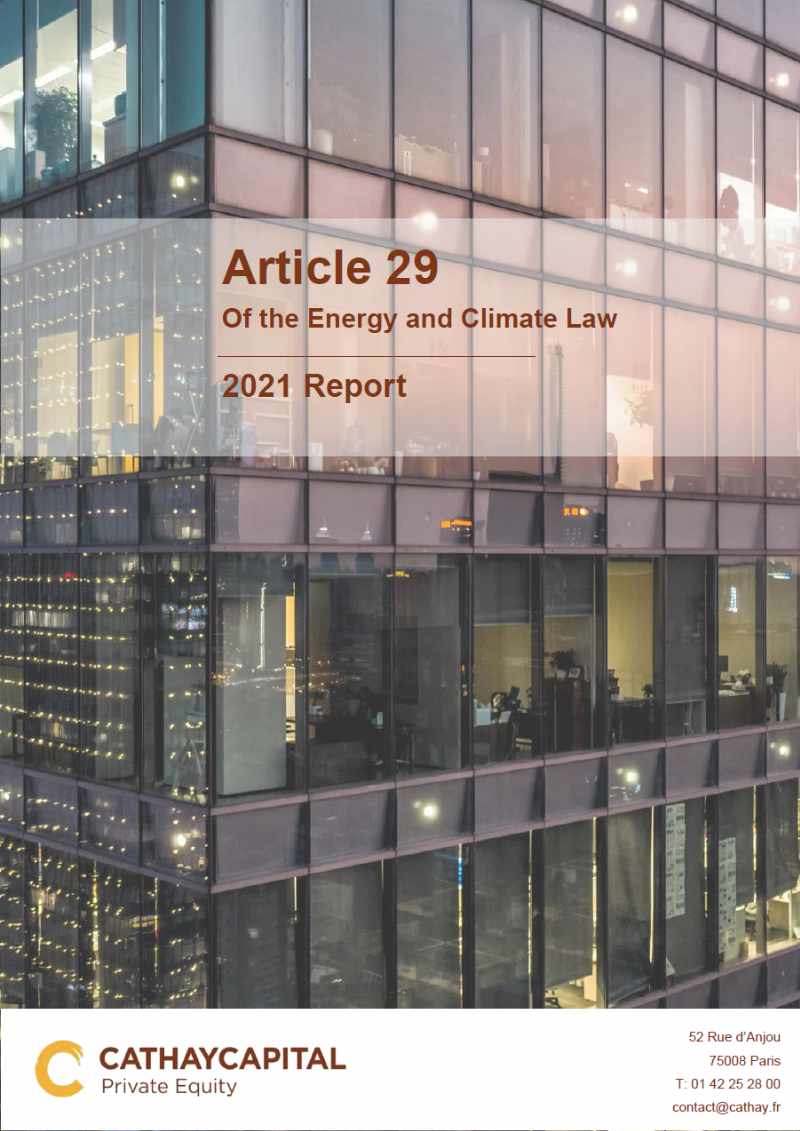
Article 29 of the Energy and Climate Law
2021 Report (Cathay Capital)
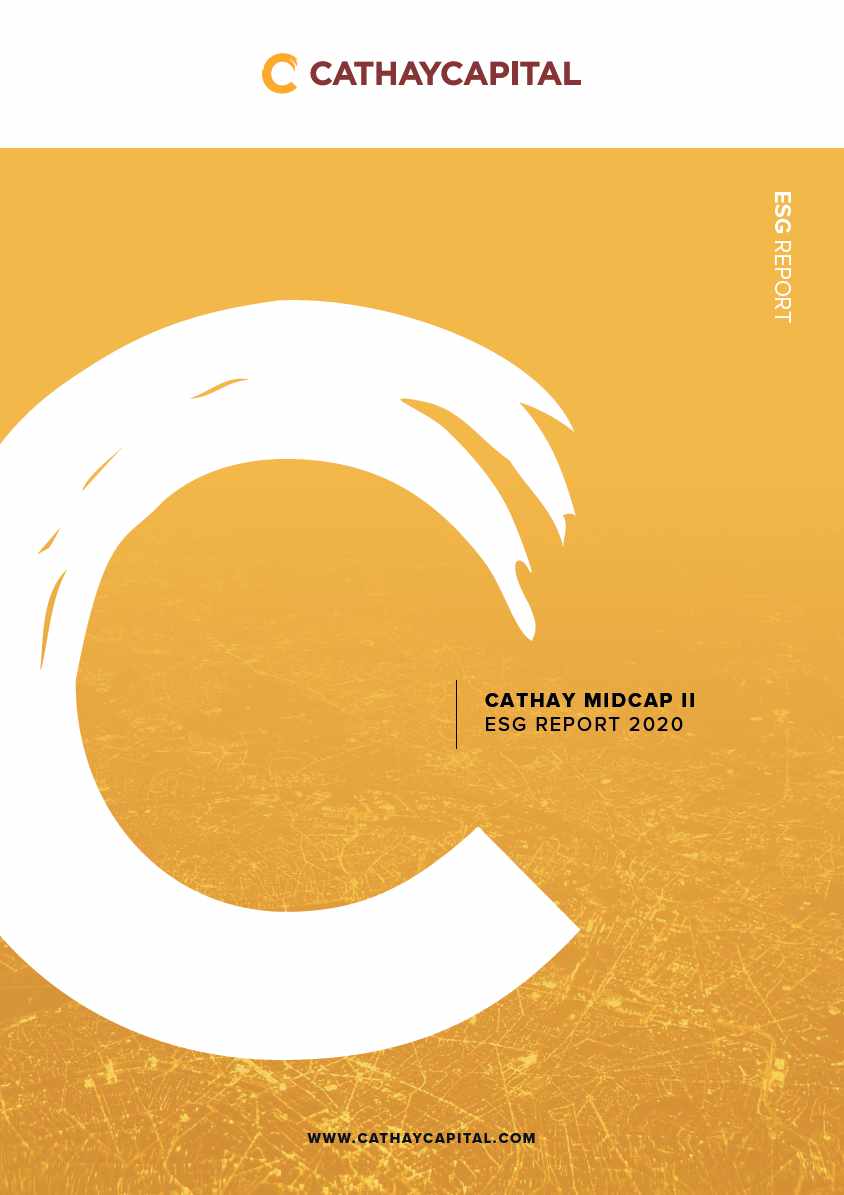
Cathay Midcap II
ESG Report 2020
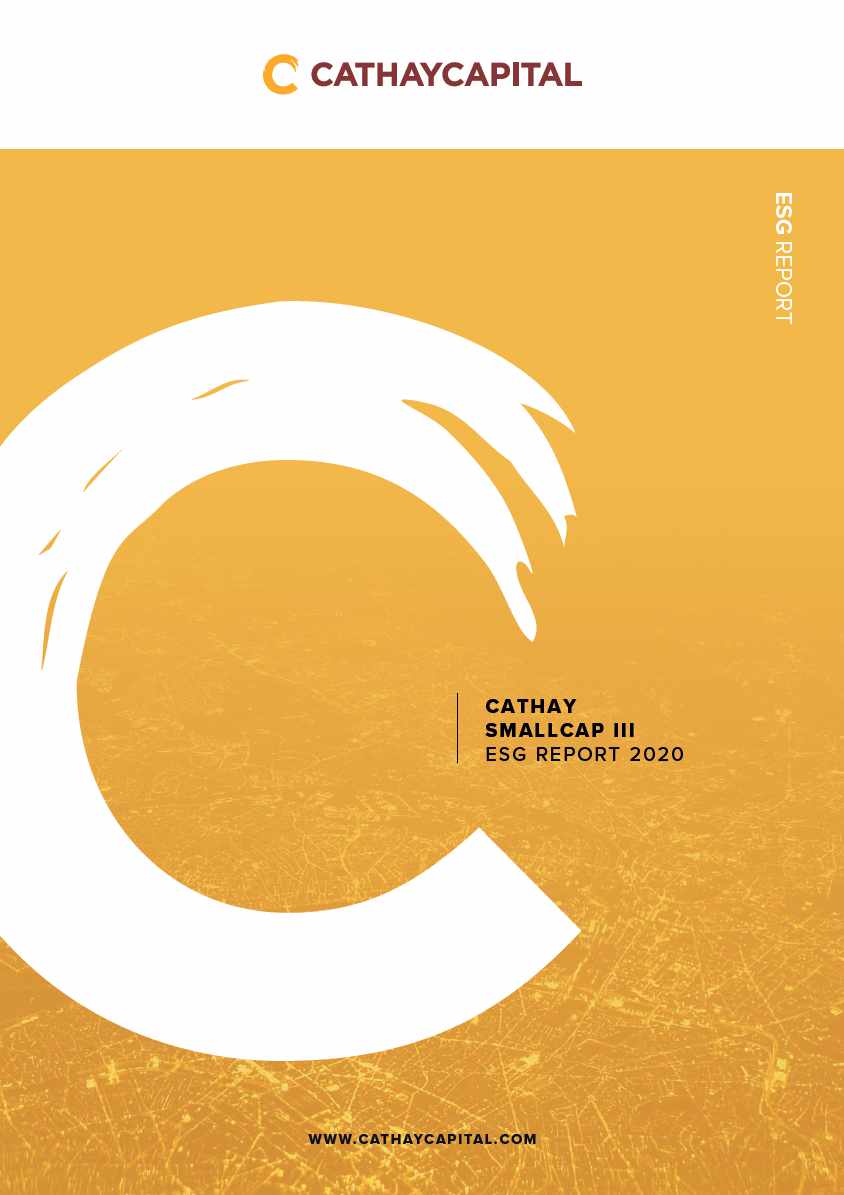
Cathay Smallcap III
ESG Report 2020
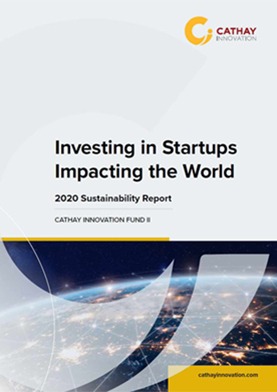
Cathay Innovation Fund II
Sustainability Report 2020
As a Firm, we are committed to considering adverse impacts on sustainability factors in [both] our entity [and product] level disclosures and have determined that sustainability risks are relevant to our financial products.
We therefore take the “comply” approach in relation to financial products and undertake to assess the likely impacts of sustainability risks on the returns of each financial product.
After careful consideration of the 14 Principal Adverse Indicators (PAI), this is where we stand.
Our ByLaws already cover 7 PAI’s as they stipulate that:
- We do not invest in any company with an exposure to the fossil fuel sector
- We do not invest in companies with hazardous waste
- We exclude any exposure to controversial weapons (anti-personnel mines, cluster munitions, chemical weapons, and biological weapons)
- We do not invest in high energy consumption intensity sectors with high impact on climate
- We do track the share of non-renewable energy consumption and production
- We do follow the OECD guideline violations
- We do follow the OECD guideline compliance monitoring system
Additionally, our ESG framework does also monitor the following 5 PAI indicators:
- Greenhouse Gas (GHG) emissions (*)
- Carbon footprint (*)
- GHG intensity of investee companies (*)
- Unadjusted gender pay gap
- Board gender diversity
(*) so far we’ve succeeded to track 92% of Private Equity companies and 56% of Venture Capital invested firms
The last 2 PAI indicators (‘activities negatively affecting biodiversity-sensitive areas’ and ‘emissions to water’) are not yet fully tracked separately, but are currently undertaken with the use of IBAT and ENCORE framework to validate with a mapping our non-exposure. This mapping should be available by 2025 and reported accordingly knowing that i) our investment thesis – mainly digital and enterprise services – is avoiding biodiversity-sensitive areas or emissions to water ii) none of our due diligence conducted for each and every investment has detected such negative impact so far.
We aim at reporting a full PAI reporting by 2025 once the metrics on these last two indicators would be available.